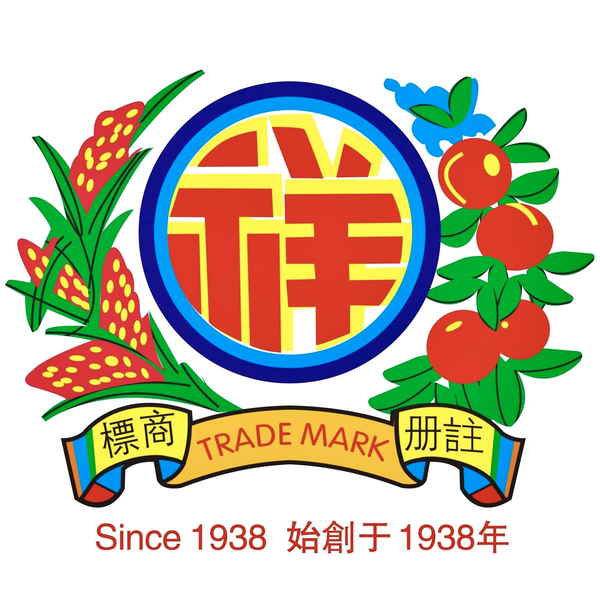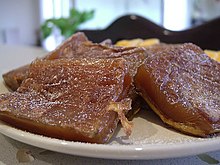🚚 The fastest delivery time : 2-day delivery.
🐝 Supplier / Origin : China
🌱 Supplier introduction : Healthy Express is a unique local online shopping platform. It cooperates with more than 30 local farms and importers to provide more than 1,500 kinds of goods, including fruits and vegetables, meat, seafood, poultry and eggs, etc. We offer local, organic, sustainable options. We use a fair trade price to purchase directly from farmers. The pricing enables producers and consumers to have a sustainable relationship, and the three parties benefit the most.
In the 1990s, Mr. Lee Cheung Woo and his family sold the factory in Pak Fa Tsuwen, Yuen Long, and moved the production line to Thailand. However, a few years ago, the factory was temporarily shut down because the helmsman Lee Tak Hing was old and there was no heir to take over the business. Later, Mr. Cheng Wing Kwong, a distributor of Shun Fat Hong in Min Street in Jordan, learned about it and bought the brand from Li. He then used the traditional flour-making formula used by Li, including the source of rice, the machine, the grinding conditions (rice grinding amount and speed) and the fineness of the flour. In 2012, the company purchased glutinous rice flour from Thailand again and re-launched glutinous rice flour on the market under the Lee Siang Wo brand.
Today, many people still buy Lee Cheung Woo's rice flour to make taro cakes, radish cakes, etc., which are provided by Shun Fat Hong.
🛍 Product Information :
The thicker the body, the more fragrant the water chestnut is.
Can be crushed to small size
The finished product is soft, smooth, refreshing, transparent and elastic
Ingredients: Water chestnut powder
Uses: Making water chestnut cake and water chestnut soup
Rice cake / Nian gao
 Cantonese-style nian gao
|
Nian gao (Chinese: 年糕; pinyin: niángāo; Jyutping: nin4 gou1), sometimes translated as year cake or New Year cake or Chinese New Year's cake, is a food prepared from glutinous rice flour and consumed in Chinese cuisine. It is also simply known as "rice cake". While it can be eaten all year round, traditionally it is most popular during the Chinese New Year. It is considered good luck to eat nian gao during this time of the year because nian gao (年糕) is a homonym for "higher year" or "grow every year" (年高), which means "a more prosperous year". The character 年 is literally translated as "year", and the character 糕 (gāo) is literally translated as "cake" and is identical in sound to the character 高, meaning "tall" or "high". In Mandarin (though not all Chinese languages), Nian gao (年糕) also is an exact homonym of "sticky cake" (黏糕/粘糕), the character 黏/粘 (nián) meaning "sticky".
It is a traditional food and New Year food popular in East Asia. It is popular in various parts of East Asia, such as: Mainland China, Hong Kong, Macau and Taiwan, Japan, the Korean Peninsula, and some overseas Chinese-Cantonese-Chinese countries, such as Indonesia, Malaysia, Singapore, etc. In Chinese, rice cake is homophonic with "niangao", which means rising year by year. In the early days, rice cake was used to worship gods and ancestors on New Year's Eve, and then gradually became a New Year food.
Many families in China still retain the tradition of eating only vegetarian food on the first day of the New Year, because they believe that doing so will bring good luck to their lives for the whole year. Like many other New Year dishes, certain ingredients take precedence over others as they also have similar names that represent prosperity, good fortune, or even counting money.
Water chestnut cake
Water chestnut cake (traditional Chinese: 馬蹄糕; simplified Chinese: 马蹄糕; Cantonese Yale: máhtài gōu) is a sweet Cantonese dim sum dish made of shredded Chinese water chestnut.
Water chestnut cake, radish cake and taro cake are all indispensable New Year cakes during the Spring Festival in southern China. Water chestnut cake has the metaphor of "successful success and rising step by step".
Water chestnut cake is a cake made from water chestnut powder (i.e. water chestnut powder). Other ingredients include water chestnut pieces, cane sugar, lard and water. Water chestnut cake is generally a crystal clear golden cake with white water chestnut pieces.
It is one of the standard dishes found in the dim sum cuisine of Hong Kong, and is also available in select overseas Chinatown restaurants.
How to eat
Water chestnut cake is best eaten frozen, or fry the frozen water chestnut cake in a frying pan until golden and eat hot.
White radish cake / Turnip cake
 |
|
Radish cake |
Radish cake is a Chinese cuisine popular in the Fujian and Guangdong regions. In Guangdong, it is a snack in Cantonese teahouses. In Macau and Hong Kong, China, it is also a New Year food, which means rising step by step. Carrot cake is also very important in Minnan culture, so it is also very common in southern Fujian, China, Taiwan, Singapore and Malaysia. The locals call it "carrot cake" in Minnan Quanzhang and Chaoshan dialects. The Hakka people in Taiwan call it "carrot cake" or "carrot cake".
Although the method of making carrot cake is simple, it takes a long time to wait. First, make the dough. You need to mix rice flour, glutinous rice flour, corn flour and a lot of water into a batter. Then add shredded radish, pieces or powder. If you want to add a richer taste, you can add mushrooms, shrimps, bacon or minced bacon. After it is completed, use a mold to fix it into a square shape and steam it in a steamer.
Coconut Milk Cake
 |
|
Coconut pudding |
Coconut milk cake is a common dessert in Guangdong, China and Hong Kong. It can also be called "snow cake". There are similar foods in Thailand. Coconut milk cake is a jelly made with coconut milk and dairy products as the main ingredients. Sometimes it is sprinkled with coconut shreds when it is finished. After mixing, it does not need to be steamed. It can be made by refrigerating for several hours. It tastes better after refrigeration. It is often used as one of the snacks in Hong Kong restaurants for tea drinkers as a dessert after dinner. Many people have developed different flavors: matcha, taro, vanilla, mango, strawberry, etc.
Taro Cake
 Taro cake
|
|
Taro cake (traditional Chinese: 芋頭糕; simplified Chinese: 芋头糕; pinyin: yùtóu gāo; Cantonese Yale: wuhtáu gōu).
Taro cake is a Cantonese food and a snack sold in teahouses in Hong Kong and Macau. It is also common in Malaysia and Singapore as a breakfast or afternoon tea snack. The ingredients include glutinous rice flour, taro, shrimp, mushrooms, bacon and bacon. After making taro cake, it can be fried or not and eaten directly. It tastes better when eaten with chili sauce.
A reunion dinner is held on New Year's Eve, during which family members gather for a celebration.[83] The venue will usually be in or near the home of the most senior member of the family. The New Year's Eve dinner is very large and sumptuous and traditionally includes dishes of meat (namely, pork and chicken) and fish. Most reunion dinners also feature a communal hot pot as it is believed to signify the coming together of the family members for the meal. Most reunion dinners (particularly in the Southern regions) also prominently feature specialty meats (e.g. wax-cured meats like duck and Chinese sausage) and seafood (e.g. lobster and abalone) that are usually reserved for this and other special occasions during the remainder of the year. In most areas, fish (simplified Chinese: 鱼; traditional Chinese: 魚; pinyin: yú) is included, but not eaten completely (and the remainder is stored overnight), as the Chinese phrase "may there be surpluses every year" (simplified Chinese: 年年有余; traditional Chinese: 年年有餘; pinyin: niánnián yǒu yú) sounds the same as "let there be fish every year." Eight individual dishes are served to reflect the belief of good fortune associated with the number. If in the previous year a death was experienced in the family, seven dishes are served.
Other traditional foods consist of noodles, fruits, dumplings,[84] spring rolls,[85] and Tangyuan[83] which are also known as sweet rice balls. Each dish served during Chinese New Year represents something special. The noodles used to make longevity noodles are usually very thin, long wheat noodles. These noodles are longer than normal noodles that are usually fried and served on a plate, or boiled and served in a bowl with its broth. The noodles symbolize the wish for a long life. The fruits that are typically selected would be oranges, tangerines, and pomelos as they are round and "golden" in color, symbolizing fullness and wealth. Their lucky sound, when spoken, also brings good luck and fortune. The Chinese pronunciation for orange is 橙 (chéng), which sounds the same as the Chinese for 'success' (成). One of the ways to spell tangerine(桔 jú) contains the Chinese character for luck (吉 jí). Pomelos are believed to bring constant prosperity. Pomelo in Chinese (柚 yòu) sounds similar to 'to have' (有 yǒu), disregarding its tone, however it sounds exactly like 'again' (又 yòu). Dumplings and spring rolls symbolize wealth, whereas sweet rice balls symbolize family togetherness.






















